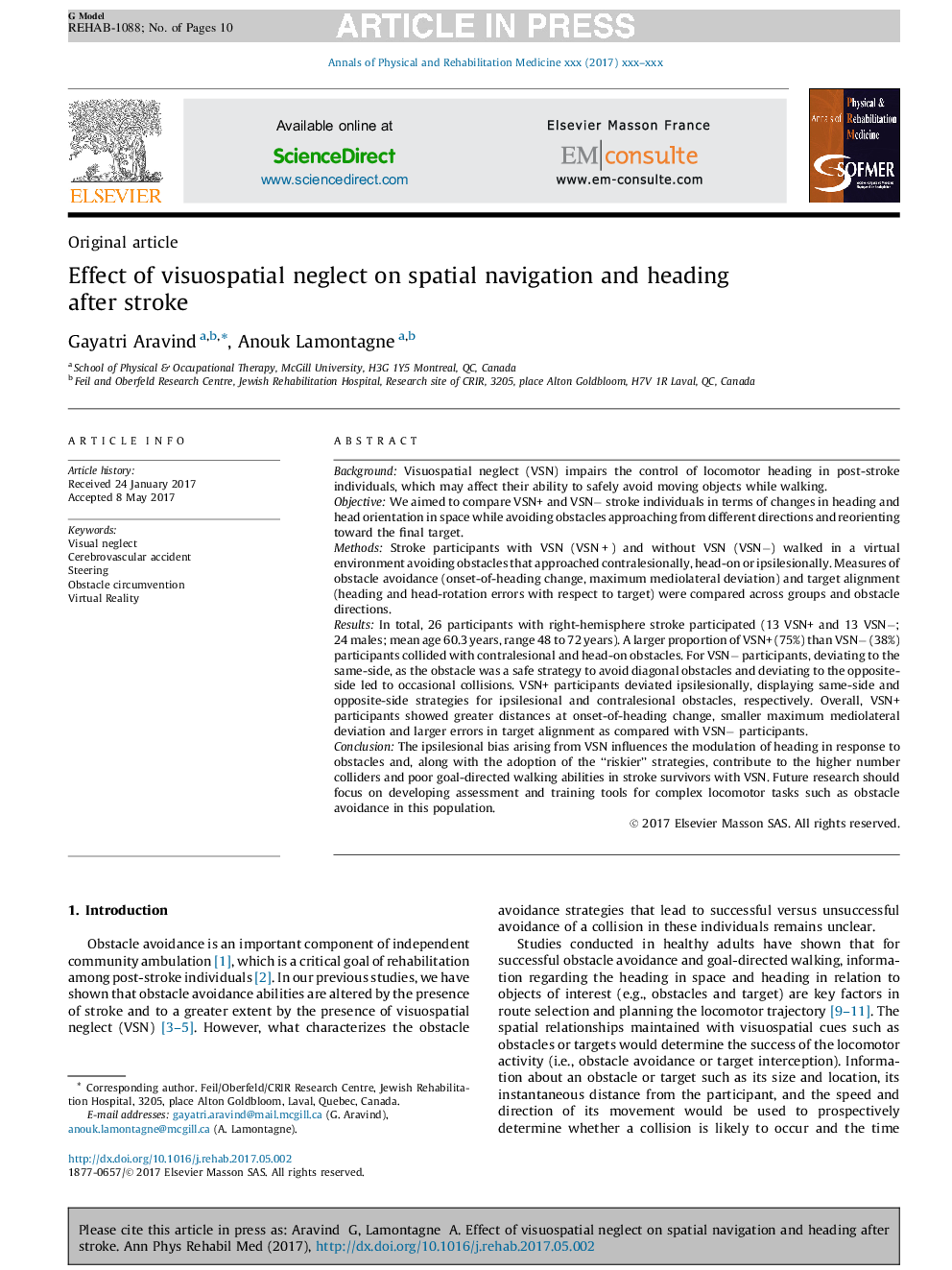| Article ID | Journal | Published Year | Pages | File Type |
|---|---|---|---|---|
| 8795690 | Annals of Physical and Rehabilitation Medicine | 2018 | 10 Pages |
Abstract
The ipsilesional bias arising from VSN influences the modulation of heading in response to obstacles and, along with the adoption of the “riskier” strategies, contribute to the higher number colliders and poor goal-directed walking abilities in stroke survivors with VSN. Future research should focus on developing assessment and training tools for complex locomotor tasks such as obstacle avoidance in this population.
Related Topics
Health Sciences
Medicine and Dentistry
Orthopedics, Sports Medicine and Rehabilitation
Authors
Gayatri Aravind, Anouk Lamontagne,
